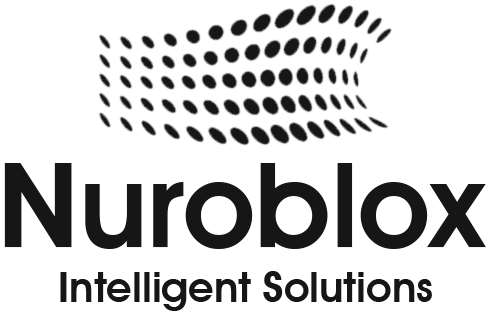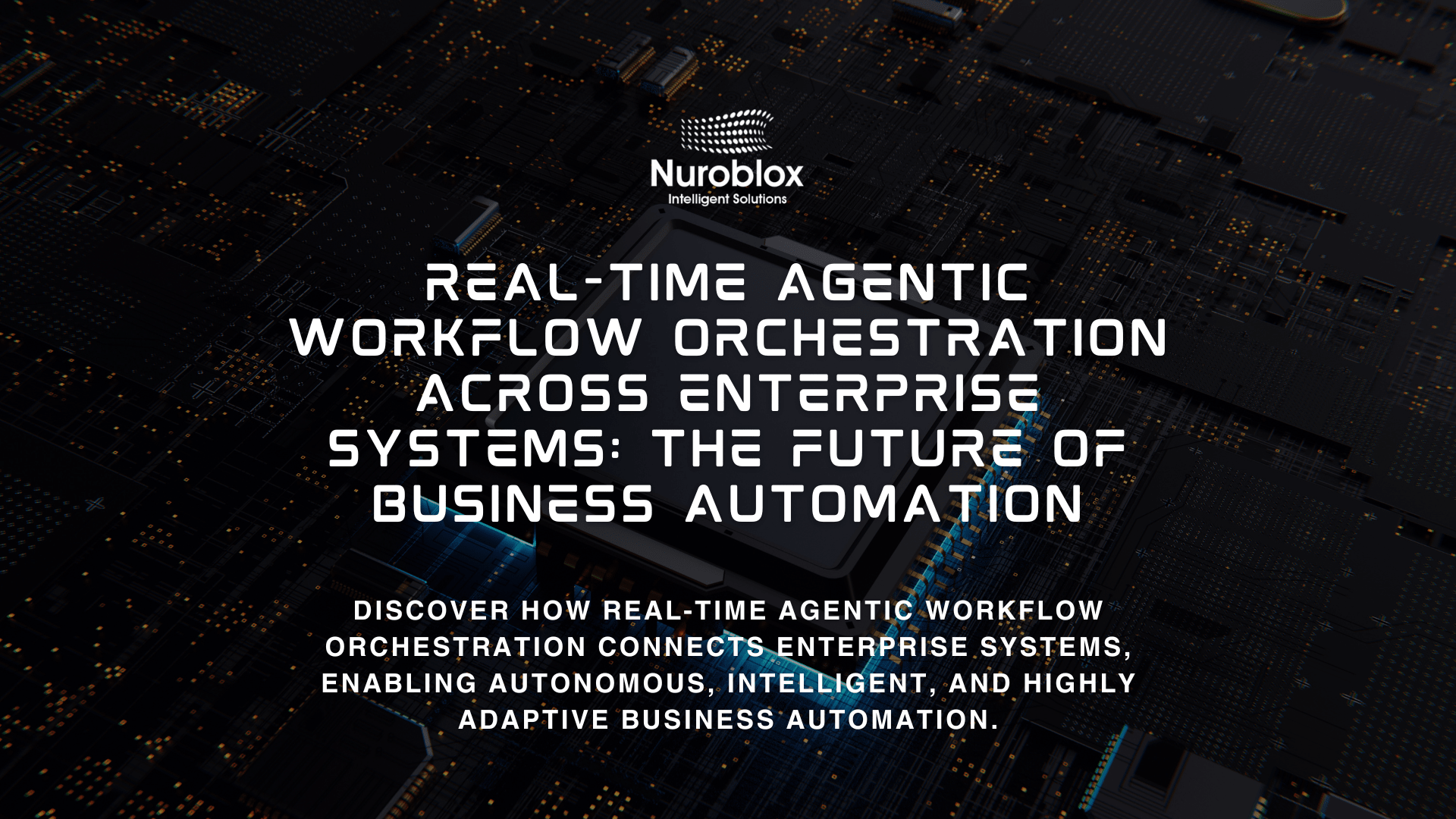Real-Time Agentic Workflow Orchestration Across Enterprise Systems: The Future of Business Automation
Real-time agentic workflow orchestration represents a paradigm shift in how enterprises manage complex, multi-system processes. Unlike traditional automation that follows rigid, pre-programmed rules, agentic workflow orchestration leverages autonomous AI agents that can reason, adapt, and make decisions across interconnected enterprise systems in real time. This transformative approach enables organizations to achieve unprecedented levels of efficiency, agility, and intelligent automation across their entire technology ecosystem.
What Is Real-Time Agentic Workflow Orchestration
Real-time agentic workflow orchestration combines the power of autonomous AI agents with sophisticated workflow management to coordinate complex business processes across multiple enterprise systems simultaneously. These intelligent agents operate independently, communicate with each other, and adapt their behavior based on changing conditions without constant human intervention.
At its core, this technology integrates three critical components – autonomous agents capable of reasoning and decision-making, real-time data processing and synchronization, and cross-platform orchestration that connects disparate enterprise systems. The result is a dynamic, self-optimizing automation infrastructure that responds instantly to business events and conditions.
Key Components of Agentic Orchestration
The foundation of effective agentic workflow orchestration rests on several interconnected elements that work together seamlessly –
- Autonomous AI Agents – Self-directed software entities that perceive their environment, make decisions, and execute actions independently
- Real-Time Event Processing – Instant detection and response to triggers across all connected systems
- Intelligent Routing – Dynamic workflow path determination based on context, priorities, and system availability
- Cross-System Integration – Seamless communication protocols that enable data exchange between legacy and modern applications
- Adaptive Learning – Continuous improvement through machine learning that optimizes workflow performance over time
How Real-Time Agentic Orchestration Differs From Traditional Automation
Traditional workflow automation relies on predefined rules and linear processes that require manual updates when business conditions change. In contrast, real-time agentic workflow orchestration employs autonomous agents that can analyze situations, make contextual decisions, and adapt workflows dynamically without human programming.
Conventional robotic process automation (RPA) executes repetitive tasks but lacks the cognitive capabilities to handle exceptions or coordinate complex, multi-step processes across enterprise boundaries. Agentic orchestration bridges this gap by combining intelligent automation with real-time coordination, enabling systems to work together as a cohesive, self-managing ecosystem.
The distinction becomes particularly evident in handling unexpected scenarios – traditional systems stop and wait for human intervention, while agentic orchestration agents evaluate alternatives, consult relevant data sources, and implement appropriate solutions autonomously.
Benefits of Implementing Agentic Workflow Orchestration
Organizations that deploy real-time agentic workflow orchestration across their enterprise systems experience transformative improvements in operational efficiency and business agility.
Operational Excellence – Real-time orchestration eliminates workflow bottlenecks by enabling instant handoffs between systems and agents, reducing process completion times by 60-80% compared to manual coordination. Autonomous agents work continuously across time zones, ensuring critical business processes never pause.
Cost Reduction and Resource Optimization – By automating complex decision-making and cross-system coordination, enterprises reduce labor costs associated with manual process management while reallocating human talent to strategic initiatives. Studies show organizations achieve 40-50% cost savings within the first year of implementing comprehensive agentic orchestration.
Enhanced Accuracy and Compliance – Agentic systems maintain perfect audit trails across all workflow executions, automatically documenting decisions, data transformations, and system interactions. This transparency ensures regulatory compliance while virtually eliminating human error in critical processes.
Scalability and Flexibility – Real-time agentic workflow orchestration scales effortlessly to handle fluctuating workloads, automatically deploying additional agent instances during peak demand periods. Organizations can rapidly adapt workflows to changing business requirements without extensive reprogramming.
Real-World Applications Across Enterprise Systems
Real-time agentic workflow orchestration delivers measurable value across diverse enterprise scenarios and industry verticals.
Financial Services and Banking – Financial institutions leverage agentic orchestration to coordinate fraud detection, loan processing, and compliance monitoring across core banking systems, payment networks, and regulatory platforms. Autonomous agents analyze transaction patterns in real time, flagging suspicious activities while seamlessly routing legitimate transactions through appropriate approval workflows.
Healthcare and Life Sciences – Healthcare organizations implement agentic orchestration to synchronize patient data across electronic health records, laboratory systems, imaging platforms, and billing applications. Intelligent agents coordinate care delivery workflows, automatically scheduling follow-up appointments, ordering necessary tests, and ensuring insurance authorizations proceed without delays.
Supply Chain and Logistics – Manufacturing and distribution companies deploy real-time agentic workflow orchestration to harmonize inventory management, order fulfillment, shipment tracking, and supplier communication across global operations. Autonomous agents dynamically reroute shipments based on weather conditions, adjust production schedules in response to demand fluctuations, and optimize warehouse operations continuously.
Customer Service and Support – Enterprises enhance customer experiences through agentic orchestration that coordinates interactions across CRM systems, support ticketing platforms, knowledge bases, and communication channels. Intelligent agents route inquiries to appropriate resources, escalate complex issues automatically, and maintain context across all customer touchpoints.
Essential Technologies Powering Agentic Orchestration
Successful implementation of real-time agentic workflow orchestration requires integration of several advanced technologies that work synergistically.
Artificial Intelligence and Machine Learning
Modern AI models enable agents to understand natural language, recognize patterns, and make contextual decisions that mirror human judgment. Machine learning algorithms continuously refine agent behavior based on historical outcomes, improving workflow efficiency over time.
Event-Driven Architecture
Real-time orchestration depends on event streaming platforms that capture and distribute business events instantly across enterprise systems. Technologies like Apache Kafka and cloud-native message queues ensure agents receive immediate notifications when actions require coordination.
API Integration and Microservices
Comprehensive API connectivity allows agentic orchestration platforms to communicate with diverse enterprise applications regardless of age or architecture. Microservices-based design enables modular deployment and independent scaling of orchestration components.
Low-Code and No-Code Platforms
Modern orchestration solutions incorporate visual workflow designers that empower business users to configure agent behaviors and define process logic without programming expertise. This democratization accelerates deployment and reduces dependence on IT resources.
Implementation Best Practices and Strategies
Organizations should follow proven methodologies when deploying real-time agentic workflow orchestration to maximize success and minimize risks.
Start with High-Impact Use Cases
Identify processes that involve multiple systems, frequent exceptions, and significant manual coordination efforts as ideal initial candidates. Focus on workflows where autonomous decision-making can deliver immediate, measurable value.
Establish Clear Governance Frameworks
Define explicit rules for agent authority, decision boundaries, and human escalation protocols before deployment. Implement comprehensive monitoring that tracks agent actions and enables rapid intervention when needed.
Prioritize Data Quality and Integration
Ensure enterprise systems provide accurate, consistent data that agents can trust when making decisions. Invest in data cleansing and standardization efforts before deploying orchestration agents.
Design for Incremental Expansion
Begin with limited agent autonomy and gradually expand capabilities as confidence and operational maturity increase. Build modular orchestration architectures that accommodate new systems and workflows without disrupting existing operations.
Invest in Change Management
Prepare employees for the transition to agentic orchestration through comprehensive training and transparent communication about how automation will augment rather than replace their roles. Celebrate early wins to build organizational momentum.
Security and Compliance Considerations
Real-time agentic workflow orchestration introduces unique security and regulatory challenges that require thoughtful mitigation strategies.
Autonomous agents require appropriate access credentials to interact with enterprise systems, creating potential attack vectors if not properly secured. Organizations must implement zero-trust security models, encrypt all inter-agent communications, and maintain granular access controls that limit agent permissions to necessary functions.
Regulatory compliance demands complete auditability of agent decisions and actions across workflows. Comprehensive logging mechanisms should capture decision rationale, data sources consulted, and outcome justifications to satisfy auditors and regulators.
Data privacy regulations like GDPR and CCPA require careful governance of how agents access, process, and transfer personal information across systems and geographic boundaries. Organizations must configure agents to respect data residency requirements and implement automated privacy controls.

Real-time agentic workflow orchestration continues evolving rapidly as AI capabilities advance and enterprise technology architectures modernize.
Emerging trends include multi-agent collaboration frameworks where specialized agents negotiate and coordinate to solve complex problems that exceed individual agent capabilities. Natural language interfaces will enable business users to configure and direct agent behaviors through conversational commands rather than technical configurations.
Integration with edge computing and IoT devices will extend agentic orchestration beyond traditional enterprise systems to include physical assets, manufacturing equipment, and distributed sensors. This convergence creates opportunities for real-time optimization of hybrid digital-physical workflows.
The next generation of orchestration platforms will incorporate advanced explainable AI that provides transparent reasoning behind agent decisions, increasing trust and enabling more autonomous operations. Federated learning approaches will allow agents to improve collaboratively while preserving data privacy across organizational boundaries.
Conclusion
Real-time agentic workflow orchestration across enterprise systems represents the future of intelligent business automation, combining autonomous AI agents with sophisticated coordination capabilities to transform how organizations operate. By implementing these advanced orchestration strategies, enterprises gain unprecedented agility, efficiency, and competitive advantage in increasingly complex digital environments.
Organizations ready to elevate their automation capabilities should explore comprehensive platforms that deliver real-time agentic workflow orchestration with proven enterprise reliability. Discover how Nuroblox enables intelligent agentic automation that transforms enterprise workflows through autonomous agents and seamless system integration.


